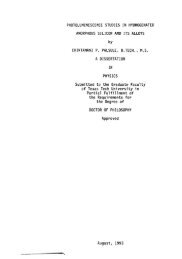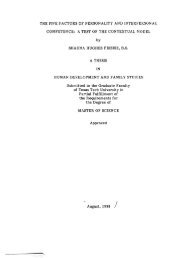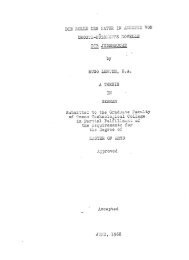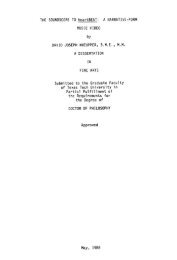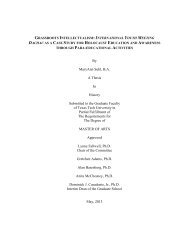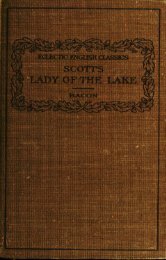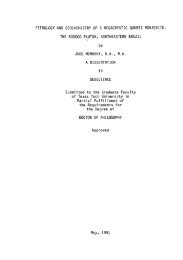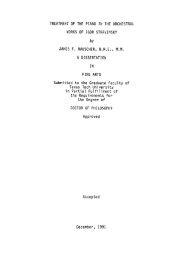Chandra Prakash Bhongir, Civil Engr, May04 - Repositories
Chandra Prakash Bhongir, Civil Engr, May04 - Repositories
Chandra Prakash Bhongir, Civil Engr, May04 - Repositories
You also want an ePaper? Increase the reach of your titles
YUMPU automatically turns print PDFs into web optimized ePapers that Google loves.
Kingdom of Napoli and this movement marked the fifth wave of Albanian migrations<br />
in Italy. A little more than a thousand Arberesh from Corone moved in Napoli,<br />
Palermo, in Messina and other villages along the Adriatic coast and formed new<br />
Arberesh communities. 53<br />
The last two migratory waves of the Arberesh in Italy occurred in 1647 during<br />
the reign of Phillip IV of Spain. The Arberesh were uprooted from Morea, as it too,<br />
fell to the Ottomans, after the Albanian population made a last stand there in 1646.<br />
The Morea Arberesh moved in Barile. 54 The seventh Arberesh emigration to Italy<br />
happened during the reign of Charles III from the house of Bourbon. The Albanians<br />
who ultimately settled in Villa Badessa in the commune of Pescara in 1744, came<br />
from Himara, a province south of the city of Vlora in Albania. Southern Albanians<br />
banned together during the seventeenth century and rose in revolts against the<br />
Ottomans. Ultimately all of the rebellions were put down by the Turkish troops who<br />
retaliated in harsh measures against the Albanian populations, leaving them little<br />
choice but to look across the Adriatic for refuge. 55<br />
53 Salvatore Petrotta, Albanesi di Sicilia:storia e cultura, (Palermo: Editori Stampatori<br />
Associati, 1966): 36.<br />
1979):81.<br />
54 Michele Famiglietti, Educazione e cultura in Arberia, (Roma: Mario Bulzoni Editore,<br />
55 Ibid., 81. See also Luigi De Rosa, “The Balkan Minorities (Slavs and Albanians) in South<br />
Italy,” in The Journal of European Economic History 29: 2-3 (Fall/Winter,2000):260 and also<br />
Salvatore Petrotta, Albanesi di Sicilia: storia e cultura, (Palermo: Editori Stampatori Associati,<br />
1966):36.<br />
Pope Paul II in a letter to Duke of Borgogna, makes note of the desolate situation that Albanians<br />
experienced in the hands of the Turks: “Gli Albanesi in parte sono uccisi con la spada, in parte sono<br />
ridotti in schiavitù. Quelle cittadelle, che avevano sostenuto in nostro favore vigorossamente l’impeto<br />
dei Turchi, si dovettero a loro consegnare. Le vicine genti rivierasche dell’Adriatico atterrite dalla<br />
paura tremano. Ovunque paura, ovunque lutti, ovunque si presenta ai nostri occhi la morte e la<br />
schiavitù. È spettacolo veramente misero…È doloroso scorgere le imbarcazioni dei fuggenti, che si<br />
riversano sulle spiagge d’Italia, avendo abbandonato le loro case. Si scorgono sdraiati sul litorale, con<br />
le mani alzate verso il cielo.”<br />
24



